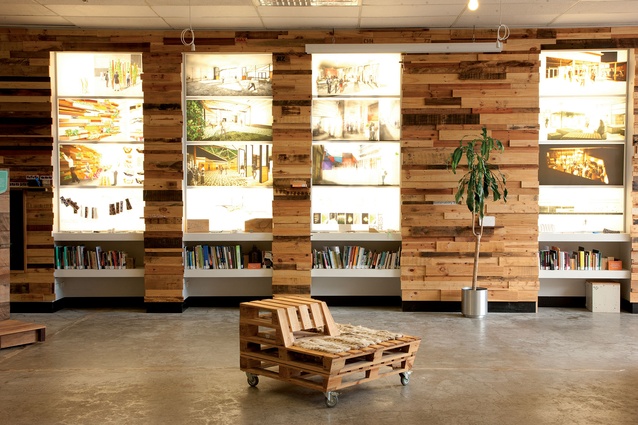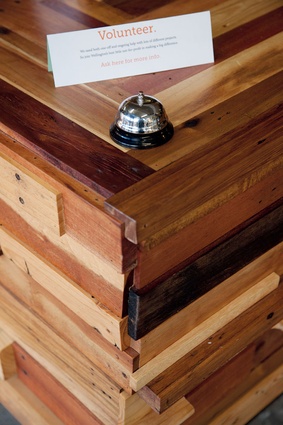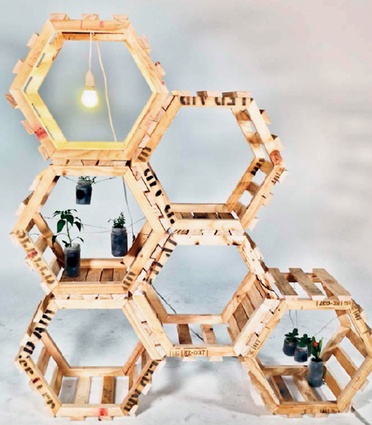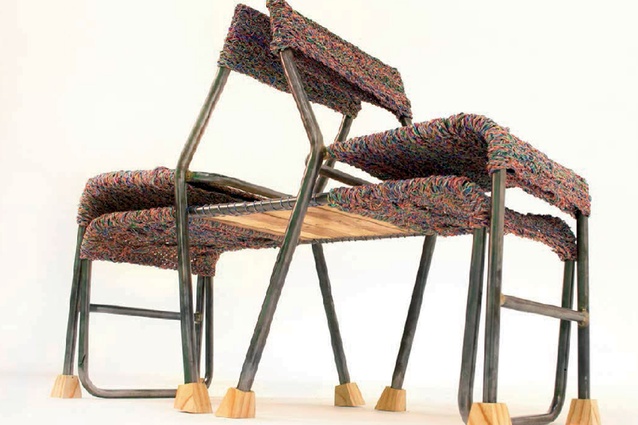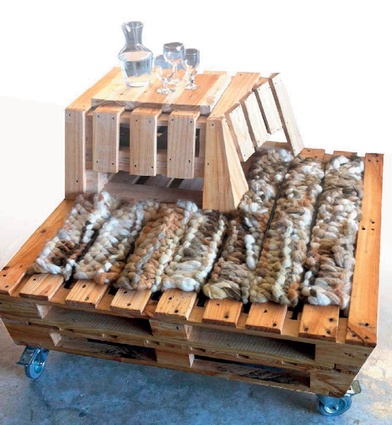Sustainable by design
Helen Frances visits a recent addition to Wellington’s green building circle, the Sustainability Trust Building with fitout by Joseph Nicholls and a suite of recycled furniture produced by students at Massey University’s College of Creative Arts.
Down Forrester’s Lane off Tory Street and Courtenay Place, the premises of the Wellington Sustainability Trust is an oasis among the concrete construction of four large buildings, and it’s likely to become greener still, when the Trust takes its philosophy further into the streets. For now the social enterprise is celebrating its first decade, and the opening of an environment centre/commercial showroom that will also host exhibitions and workshops.
The light, spacious premises, converted from what project designer, Joseph Nicholls calls a “windowless concrete bunker” are an example of sustainable design in action with extensive reuse of existing and recycled materials. The showroom is phase two of a project that initially created storage space for insulation products, electronic waste, a curtain bank and offices for staff.
“It was a unique opportunity to work on a sustainable design brief for a sustainable company,” Nicholls says.
In the showroom timber sourced from waste stream pallets provides furniture, display stands, planters and a vertical window garden called “Lunch” where staff can pick fresh greens. The plants grow in soft drink bottles, irrigated by water dripping down string that connects them from the top bottle.
Pallet timber also dresses reception and a backlit wall with a rich mix of grains, dark and lighter woods - American oak, tropical hardwoods and balsa wood among others. A primary palette of blackboard paint brings out the richness of the wood and allows a lot of the surfaces to become interactive in an old-school way, Nicholls says. High tech also has its place in a display of PV generation cells.
A team ripped apart the pallets, denailed and oiled them, an arduous task that only cost them the effort. Working to Nicholl’s design guidelines Wellington craftspeople built the fitout with some creative license, and students from Massey University’s spatial design department came on board with a real-world assignment to do.
“They were invited to look at how we could green the laneway as well as revitalise this space,” Nicholls says.” A lot of their work has served to inspire what we have done.”
The students’ design work is displayed on paper flash film along the backlit wall, the images framed by a pallet board dressing, which is echoed by reception across the room. The wall was an existing resource from an office that had created false windows and the illusion of daylight. A real, north facing glass wall now lets in natural light. From the Trust’s E-cycle resource Nicholls gave students a mass of tangled data and telephone cables.
“They stripped them down and wove them painstakingly.” The result – a coffee table and chairs. A 1950’s style, to-scale living room sliced in half is a major, and movable feature of a display that serves the Trust’s commercial and educational purposes. The mini-house shows customers the “what and how” of retrofitting for warmth and energy efficiency.
With most elements on wheels the multi-purpose space is very flexible – and one to watch.

